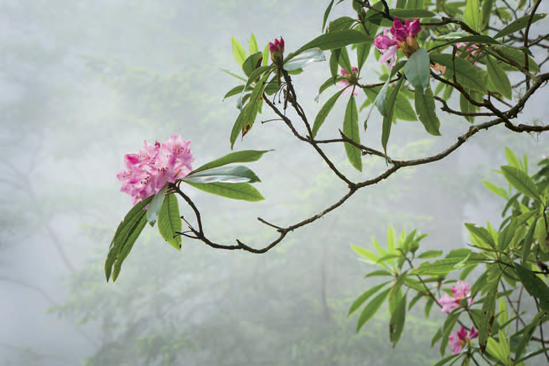7.1. ISOLATING ELEMENTS
Nature is visually chaotic. Standing in the midst of a forest, on a mountaintop, or on a beach, you're surrounded by photographic opportunity in all directions. Your challenge is to make order from chaos and reduce the visual clutter to create photos with beauty, impact, and clarity.
Figure 7-1. ABOUT THIS PHOTO Image of Redwood National Park, California (ISO 320, f/13, 1/15 sec. with a Canon EF 24-105mm L lens). Even though there was no wind, the very slight swaying of the thin branches required that I use a fast enough shutter speed to stop the motion for a sharp shot. I experimented with many apertures to achieve the look I wanted for the background.

7.1.1. CHOOSING SUBJECT MATTER
In Chapters 2 through 4 you learn how to see subtle differences in your surroundings and how to use the frame to isolate compositions from within the larger scene.
When you select objects to feature as your primary subject matter and supporting composition, look for the strongest elements first. Find tonal and color contrasts and variation in textures and patterns. Identify juxtapositions between elements that create the strongest variations — or do just the opposite, and find things that naturally seem to go together.
Keep in mind the principles of dominance and proportion and restrict your choices to as few key elements as you can. A picture of an aspen forest can be uninteresting ...
Get Nature Photography Photo Workshop now with the O’Reilly learning platform.
O’Reilly members experience books, live events, courses curated by job role, and more from O’Reilly and nearly 200 top publishers.

